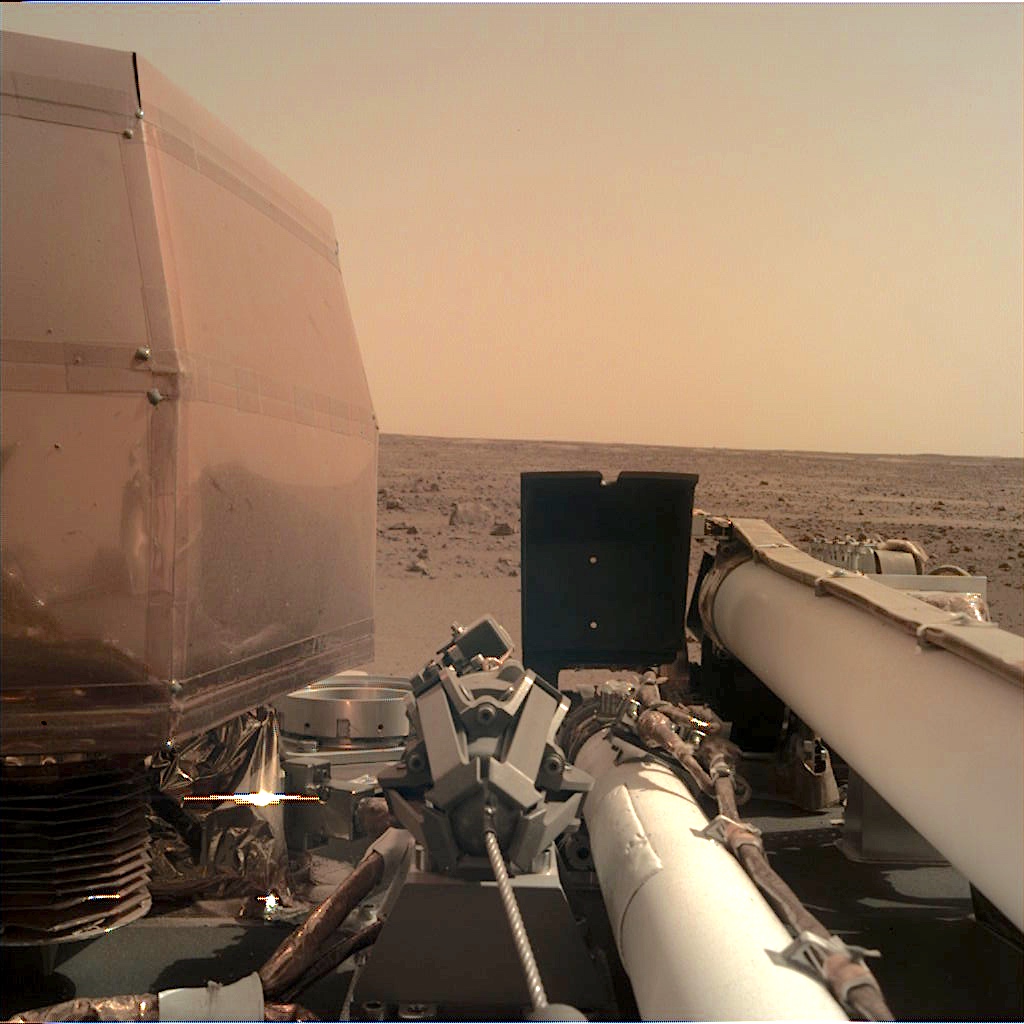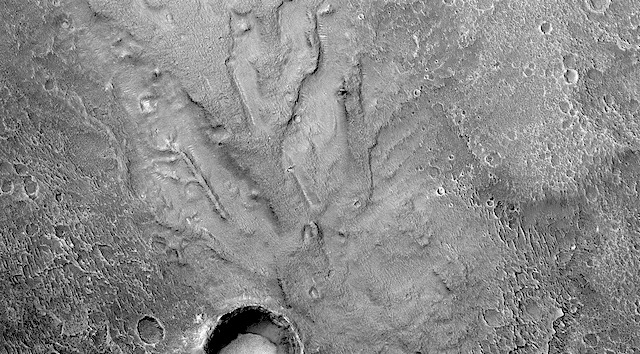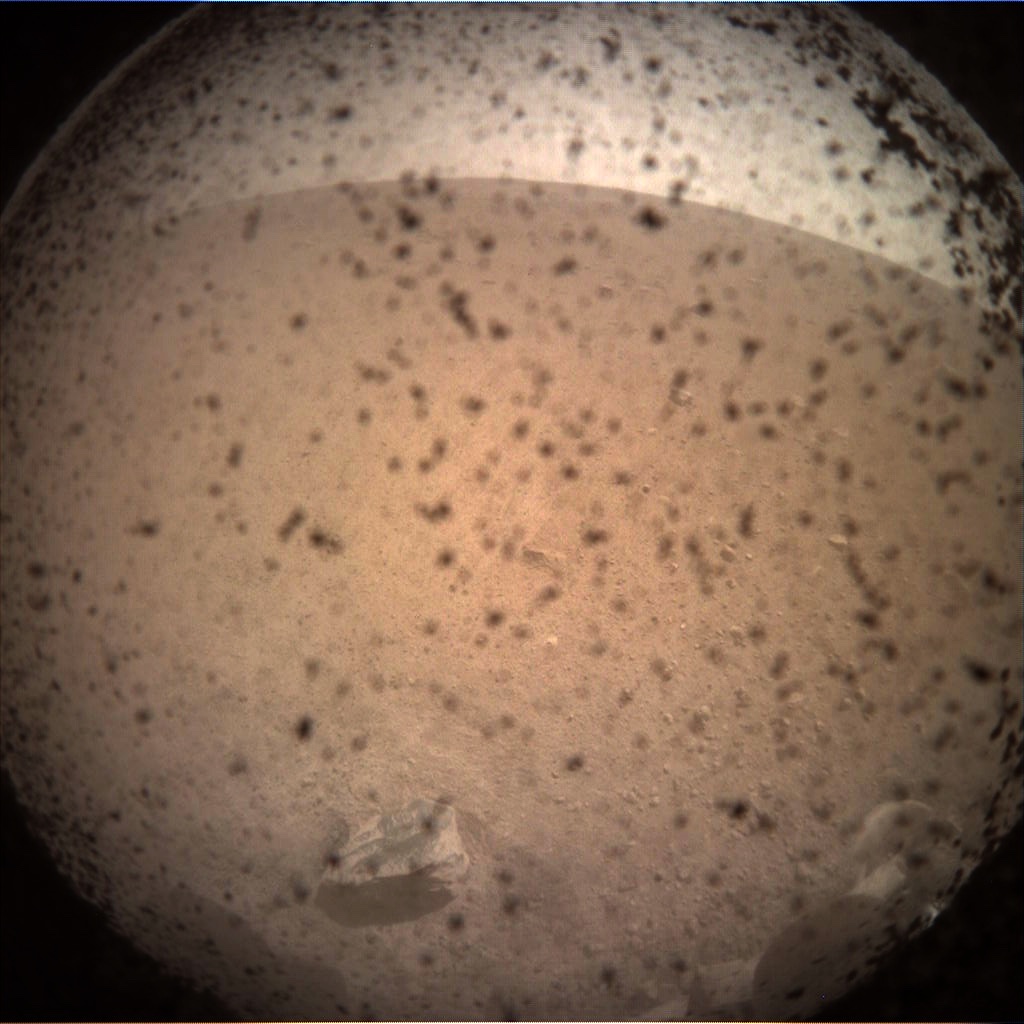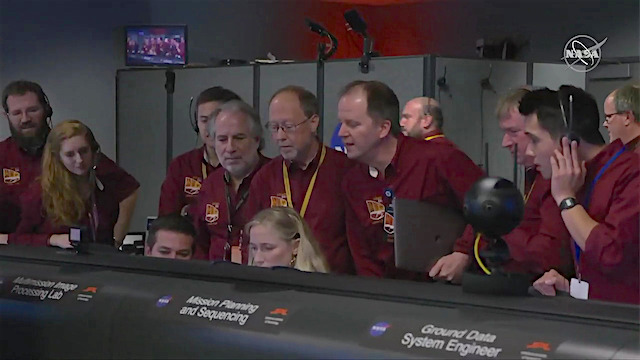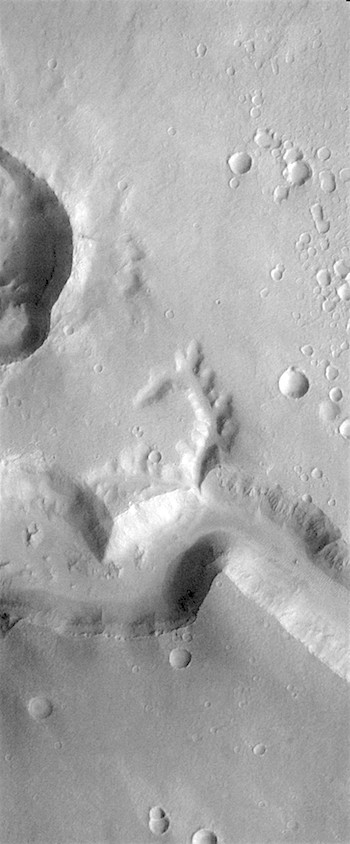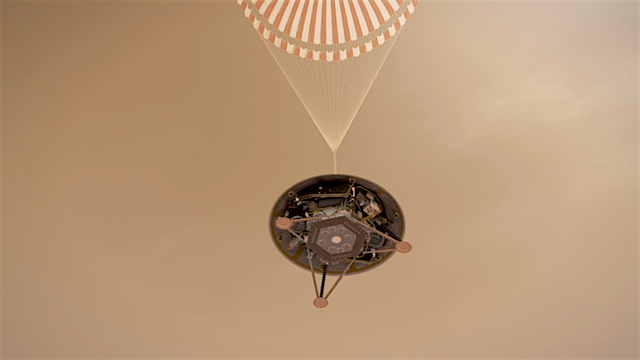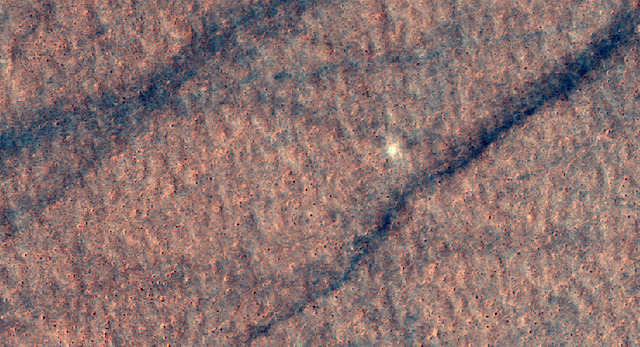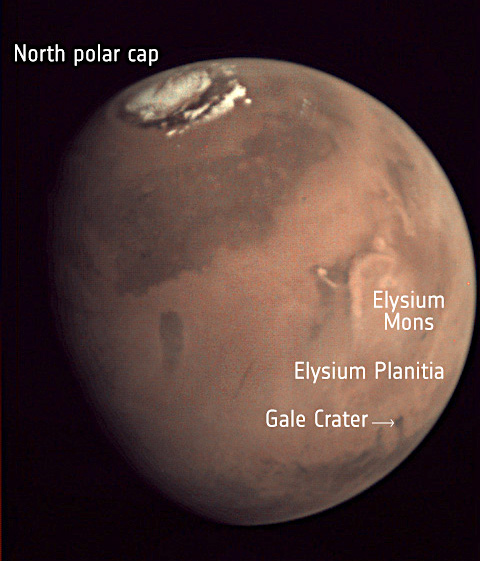 At just before 9pm Central European Time on 26 November, Mars will receive a new visitor: NASA’s InSight lander. (…)
At just before 9pm Central European Time on 26 November, Mars will receive a new visitor: NASA’s InSight lander. (…)
Since InSight’s study is focused on sensing the planet’s interior, surface geology is not such an important factor in deciding the landing site as it is for other missions. Therefore, it is targeting a flat, stable surface in the Elysium Planitia region, which is captured in this wide field view from ESA’s Mars Express Visual Monitoring Camera taken on 29 February 2016 (click here for a labelled view). (…)
In the image shown here, Elysium Planitia is located roughly between the dark features at the bottom right (which includes Gale Crater), and the brighter arc-shaped feature above, to the right of the centre of the image, which is the location of volcano Elysium Mons. The north polar ice cap is seen at the top of the image. (…)
ESA has already been supporting InSight’s mission with its ground station network throughout the cruise to Mars, following the mission’s launch in May 2018. The joint ESA-Roscosmos Trace Gas Orbiter (TGO) of the ExoMars mission, which arrived at Mars in October 2016, is ready to support data relay from InSight several times per day once it has landed safely, as required. Mars Express will also be prepared to support, on NASA’s request, ad hoc relay contacts with InSight in case of emergency… [More at link]
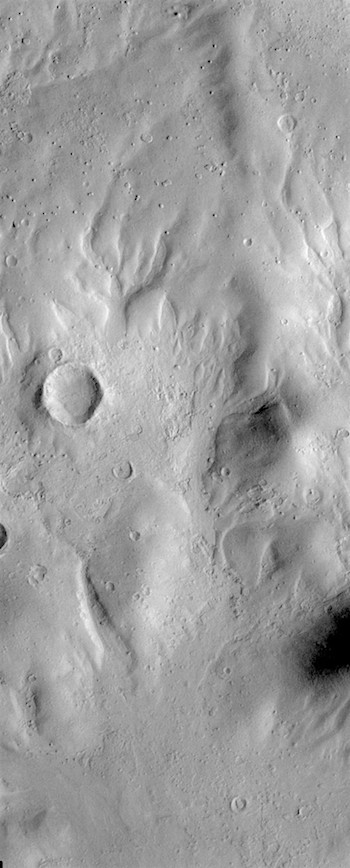 THEMIS Image of the Day, November 27, 2018. Today’s VIS image shows several small channels. These channels are along the break in topography, that leads down into Argyre Planitia.
THEMIS Image of the Day, November 27, 2018. Today’s VIS image shows several small channels. These channels are along the break in topography, that leads down into Argyre Planitia.








